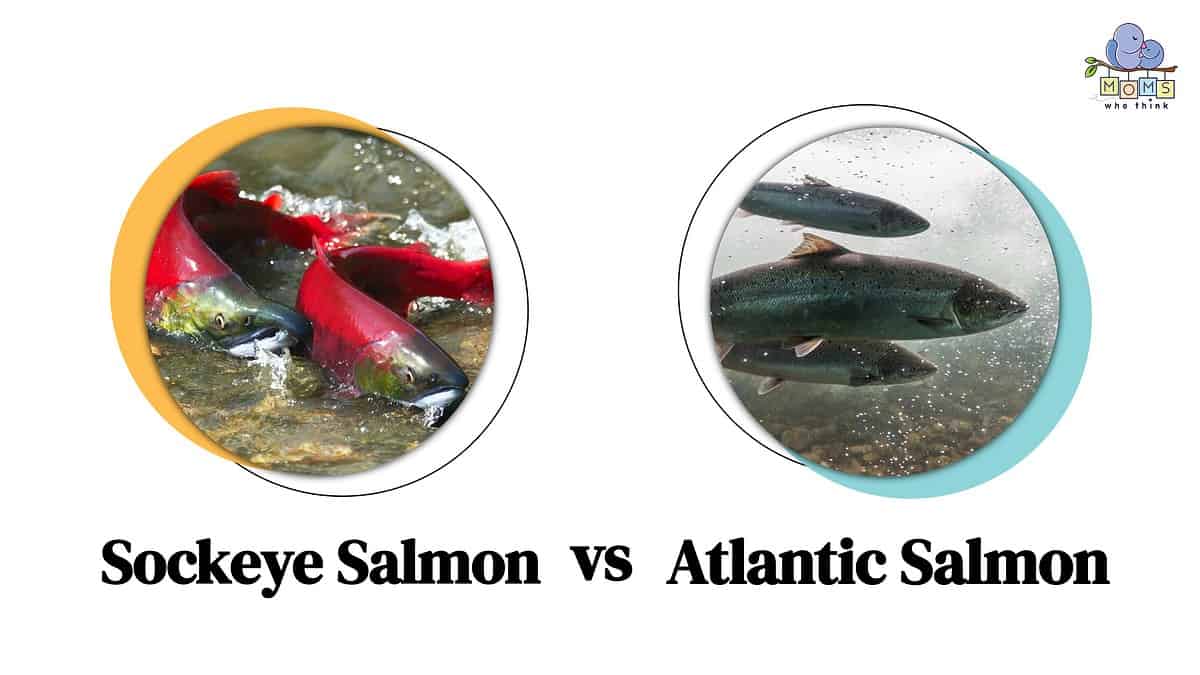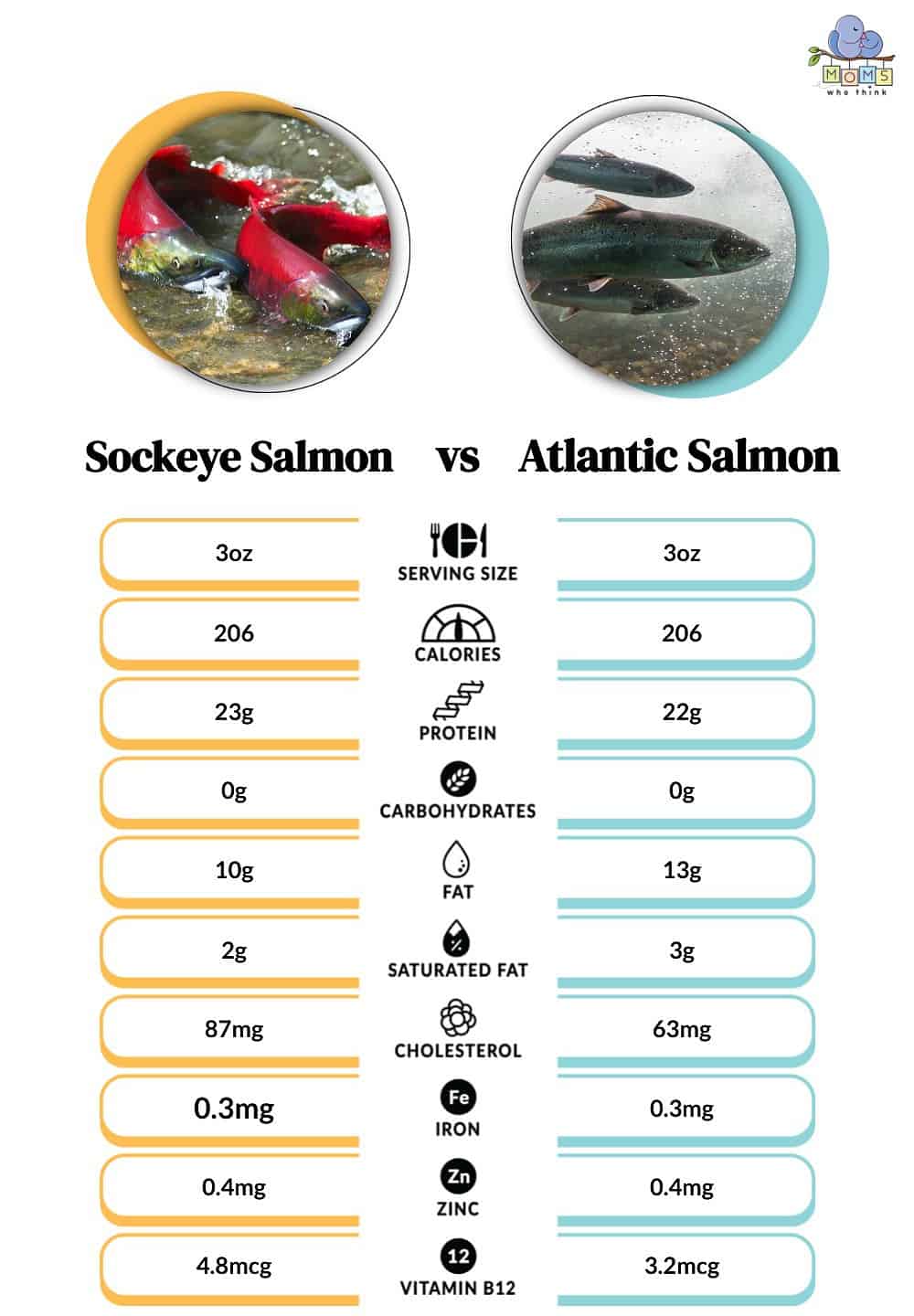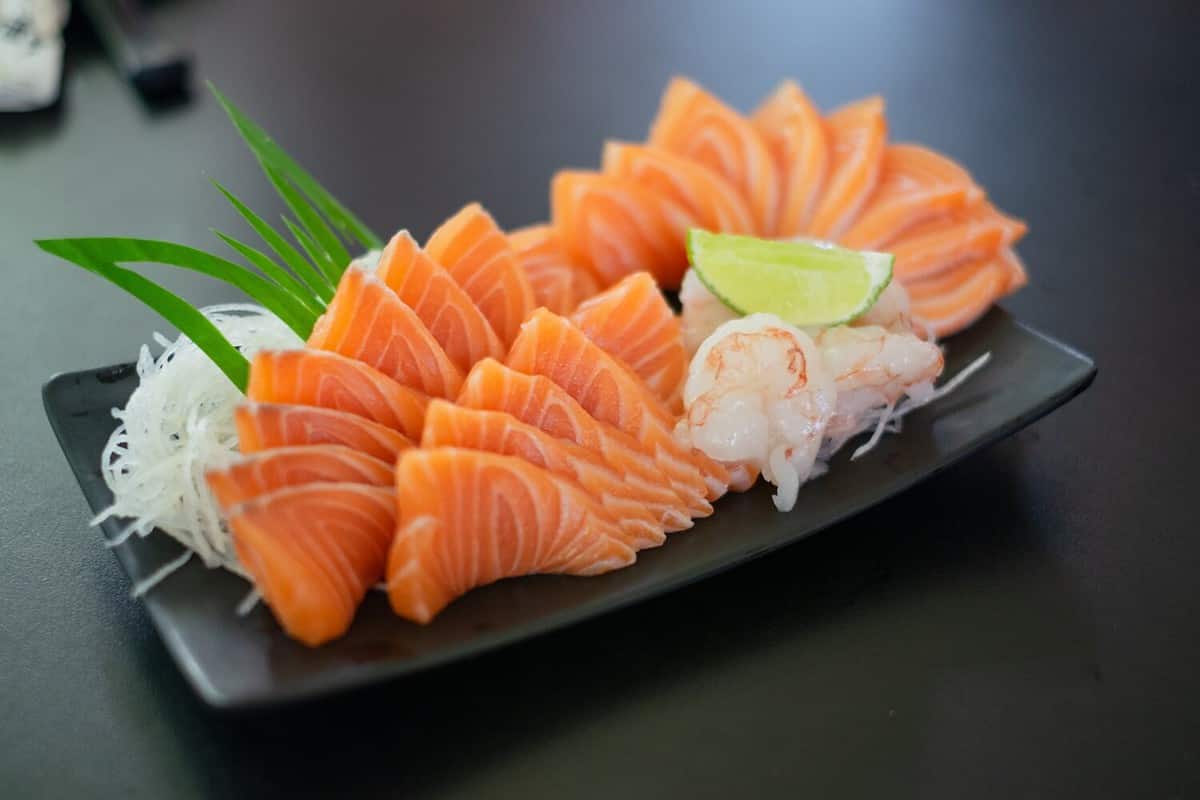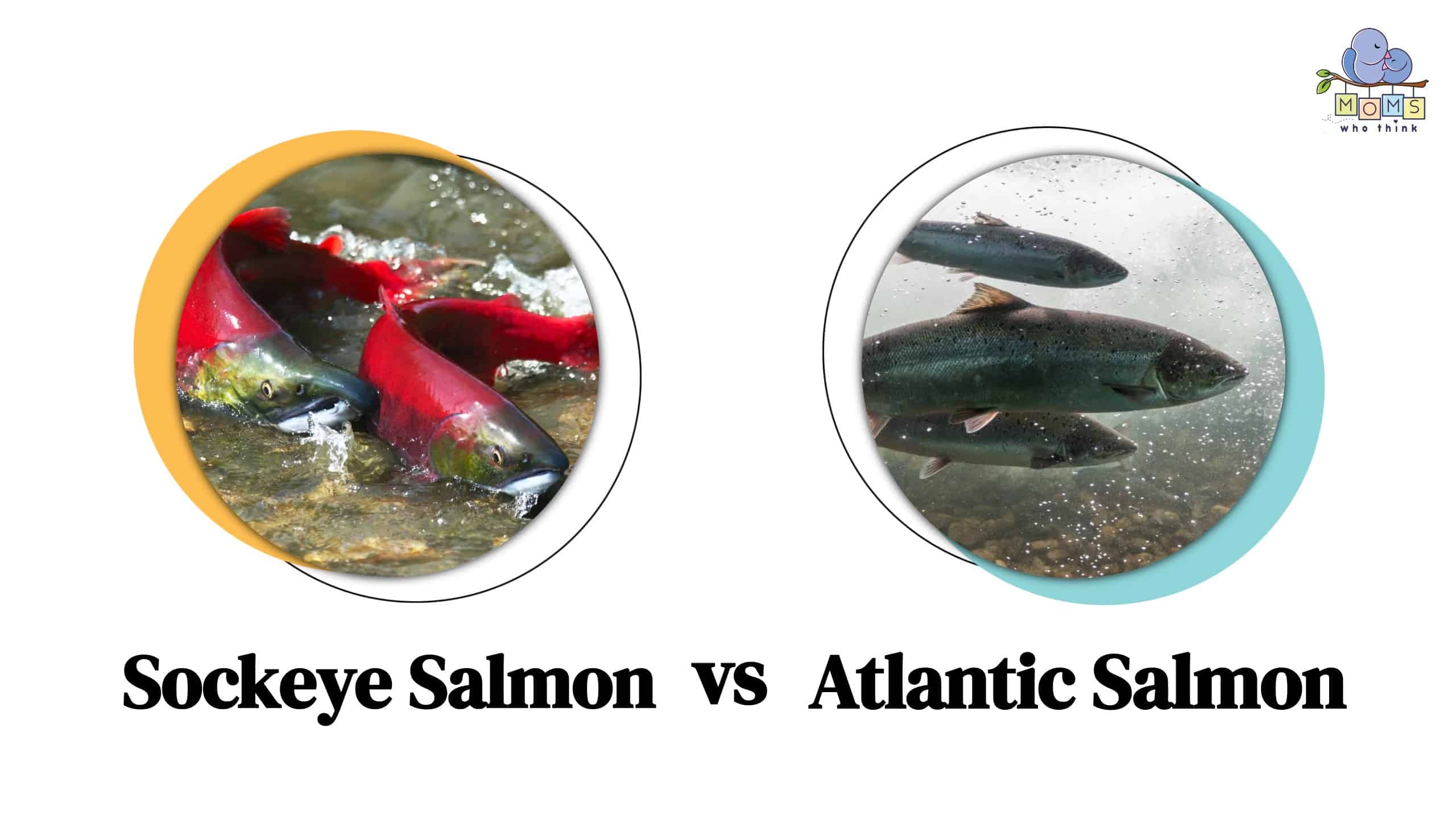You can't go wrong with having fish for dinner. It's one of the best things to eat for your health. You can also make it in various ways depending on your preference. If you're looking for healthy fish to eat, look no further than sockeye and Atlantic salmon.
While sockeye are known for being a bright-orange fish, they are also some of the healthiest fish to eat. Salmon is also widely recognized as one of the most beneficial foods. But given there are seven kinds of salmon to eat, you need to know how they benefit you differently. For instance, Atlantic salmon is also one of the best fish to eat for your overall health.
This guide explores the differences between sockeye and Atlantic salmon. We look at the health comparison, how they are different regarding fat and vitamins, and the best meals to make with either of them. You'll have a deeper appreciation of both kinds of fish.
The Origin of Sockeye and Atlantic Salmon

©
One of the reasons that sockeye and Atlantic salmon are so popular is because of their abundance of omega-3s and vitamin B.
When it comes to finding either fish, you'll find that sockeye salmon is found in Alaska and Washinton. You can fish for them in the summer months, where you'll find them in abundance. The average lifespan of a sockeye fish is about 3 to 7 years. They also eat mostly bacteria and algae.
Atlantic salmon are found on the east coast, around the Atlantic Ocean, hence its name. After spawning, Atlantic salmon will live between five and eight years. One of the most unique things about Atlantic salmon is that they are born in rivers and eventually migrate to the ocean, making them freshwater and saltwater fish. They also eat mostly insects found throughout rivers and oceans.
Since sockeye and Atlantic salmon can swim in rivers and oceans, they are more great at having a sense of smell than other fish. They also change to their flesh, changing colors as they develop and grow.
The Taste of Sockey and Atlantic Salmon
When it comes to eating, they are both different flavors. Looking at how they differ regarding taste can give you a better idea of which one you like more.
For example, sockeye salmon has a distinct, robust taste and firm texture. On the other hand, Atlantic salmon has a mild flavor with a buttery taste to it.
The Health Benefits of Sockeye Salmon vs. Atlantic Salmon

©
There's no denying that salmon is good for you. The question becomes, how is it good for you? What exact benefits do you get from it?
One of the best benefits of sockeye or Atlantic salmon is that it contains omega-3 fatty acids. These are healthy fats that support your overall heart and brain. One of the best ways they do this is by reducing inflammation and lowering blood pressure. It also lowers your risk of cancer. Both sockeye and Atlantic salmon offer an abundance of omega-3 fatty acids that are great for any meal.
Both fish also have selenium. This is directly related to lowering your risk of cancer. Both fish also have Vitamins A, C, D, and E, Niacin, and Vitamin B-12. These specifically help your blood and your nervous system.
Different Meals for Atlantic Salmon and Sockeye Salmon

©CardIrin/Shutterstock.com
If you want to reap the benefits of either sockeye or Atlantic salmon, consider some of the best recipes that accommodate it. You should look at the recipes that give these fish the most flavor.
Here are some of the best meals to consider with either sockeye or Atlantic salmon.
- Honey garlic glazed salmon
- Garlic butter baked salmon
- Brown sugar-glazed salmon
- Crispy baked salmon
- Blackened salmon tacos
Sockeye Salmon and Atlantic Salmon Offer a Variety of Options
Whether you choose sockeye salmon or Atlantic salmon, you'll discover that they are both delicious kinds of fish to eat for lunch or dinner. They can be made in various ways that offer unique ways of eating them. You'll also get the most health benefits from either one, especially when it comes to improving your overall heart health.
Sockeye and Atlantic salmon are the healthiest and tastiest kinds of fish to eat. Trying both can give you a better idea of which one you like more.
Print
Salmon with Mango Salsa
- Yield: 4 servings 1x
Ingredients
- 4 6- to 8-ounce fresh or frozen salmon fillets (with skin), 1 inch thick
- 2 tablespoons sugar
- 11/2 teaspoons finely shredded lime peel
- 3/4 teaspoon salt
- 1/4 teaspoon cayenne pepper
- 1 large ripe mango, peeled, seeded, and cut into thin bite-size strips
- 1/2 of a medium cucumber, seeded and cut into thin bite-size strips
- 2 green onions, sliced
- 3 tablespoons lime juice
- 1 tablespoon snipped fresh cilantro or 2 teaspoons snipped fresh mint
- 1 small jalapeno pepper, seeded and chopped
- 1 clove garlic, minced
Instructions
- Thaw fish if frozen. Rinse fish; pat dry. Place fish skins side down in a shallow dish.
- For the rub, in a small bowl, stir together sugar, lime peel, ½ teaspoon of salt, and the cayenne pepper. Sprinkle run evenly over the fish; rub in with your fingers. Cover and marinate in the refrigerator for 4 to 24 hours.
- Meanwhile, for salsa, in a medium bowl, combine mango, cucumber, green onions, lime juice, cilantro, jalapeno pepper, garlic, and remaining ¼ teaspoon salt. Cover and chill until ready to serve.
- In a grill with a cover, arrange medium-hot coals around a drip pan. Test for medium heat above the pan. Place fish skin side down on the greased grill rack directly over the drip pan, tucking under and thin edges—cover and grill for 20 to 25 minutes or until fish flakes easily when tested with a fork. If desired, remove the skin from the fish.
- Top with fresh salsa.
- Category: Main Course
- Method: Grilling
Nutrition
- Serving Size: 1 Fillet
- Calories: 352
- Sodium: 520 mg
- Fat: 15 g
- Saturated Fat: 3 g
- Carbohydrates: 18 g
- Fiber: 2 g
- Protein: 37 g
- Cholesterol: 105 mg


